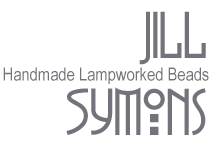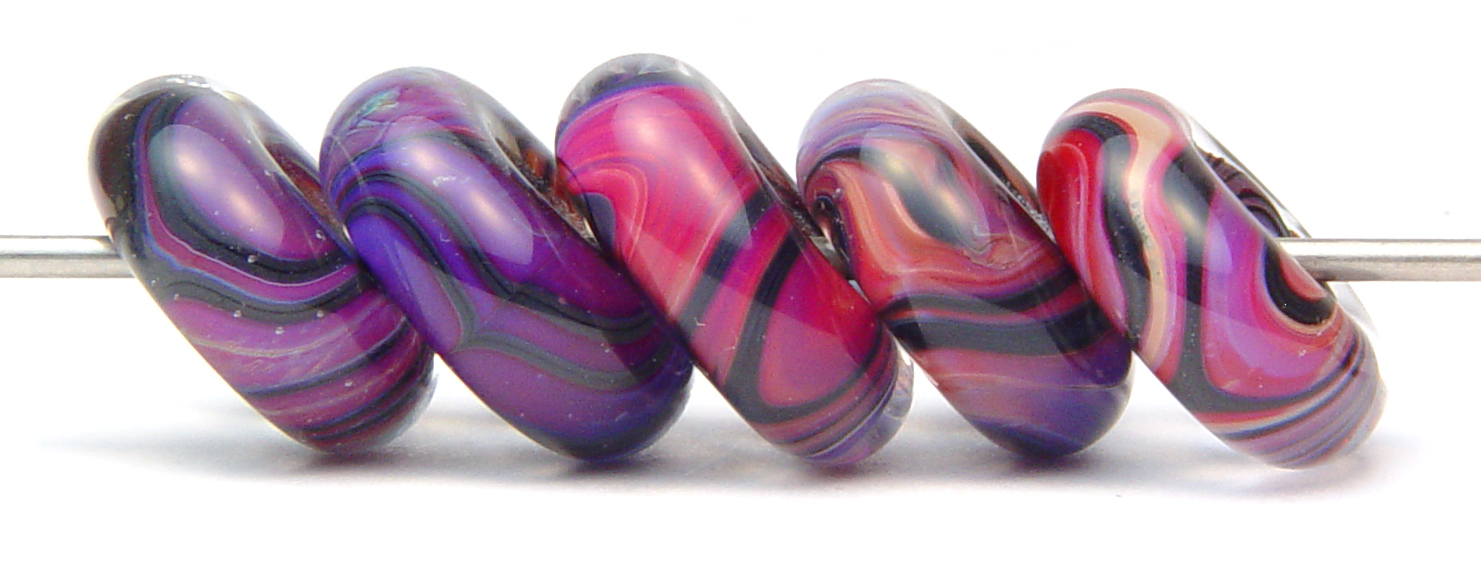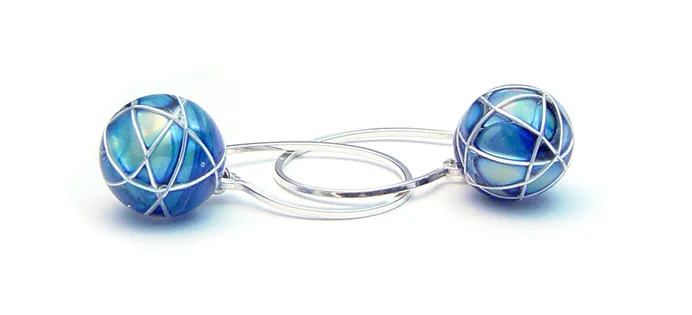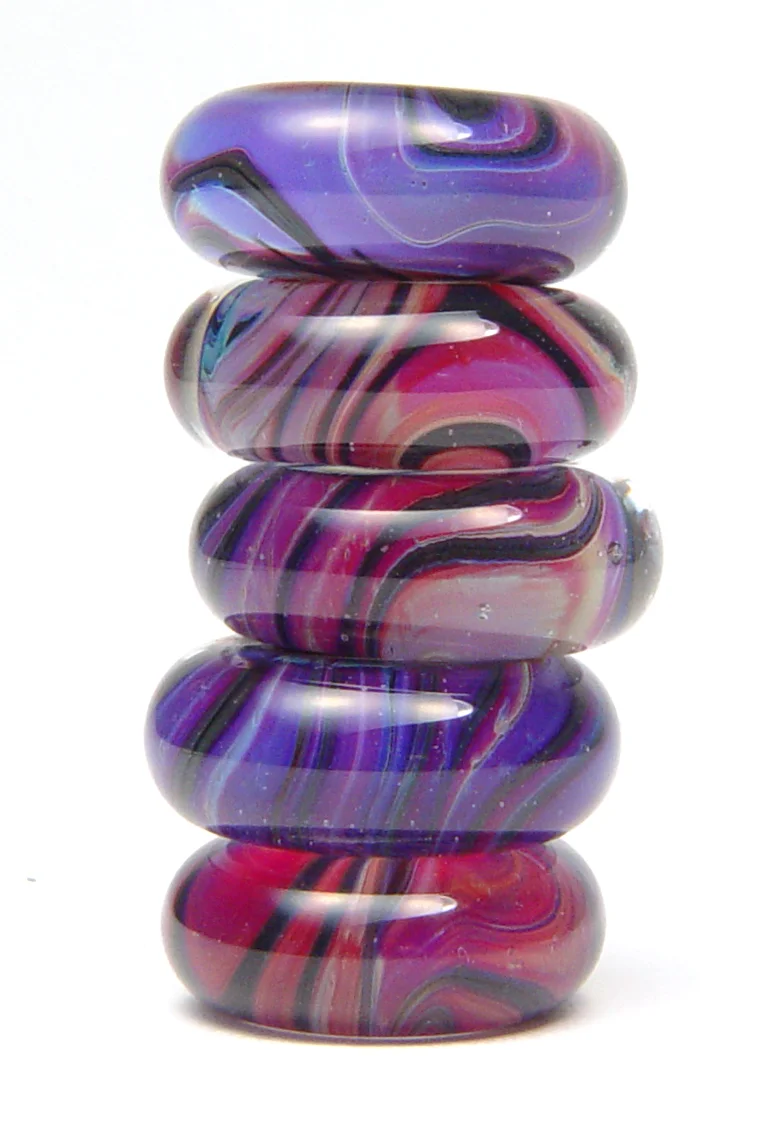I'm Jill - and I confess - I've been smitten by glass in all its forms for over two decades now. : )
This process of manipulating glass for my bead making is called Lampworking which is a type of modern day glasswork that uses a torch to melt the glass. It is also known as flameworking or torchworking, as the modern practice no longer uses the oil-fueled lamps/bellows. I use a Lynx torch by GTT - it combines propane (red hose) and oxygen (green hose) to give me a flame hot enough to melt soft glass (think Murano, Italy), and make nicely sized beads from hard glass as well (Borosilicate - aka Pyrex).
I have spent countless hours at the torch, learning mostly by trial & lots of errors. I sold exclusively on eBay for my first eight years, then decided to sell through my website. My intent was to make Wednesdays a day for everyone to eagerly anticipate.
To accomplish this, each week on Wednesday at 9pm EST, I refresh a page called Weekly Wednesday. This page holds most recent work from my studio that is available for purchase. My working toward this goal helps ideas evolve quickly & keep the offerings here fresh & unusual.
My time living in Germany and the subsequent importing of Lauscha German glass has given me a fondness of this brand of super clear and slightly stiffer lampworking glass…
Once the rods of glass have been heated to the consistency of cold honey, I wind this onto a mandrel *(a stainless steel stick coated with a ceramic bead release) From there - the winding, surface tension, gravity and manipulation by tools or presses give the bead its ultimate shape. Once I’m satisfied, it quickly goes into a preheated kiln (I have a Paragon Bluebird XL) where the temperature hovers around 1000 degrees until I’m finished making beads for the day - then its computer starts a lengthy pre-programmed annealing schedule. This allows the bead to slowly cool over the course of many hours. Stresses within a bead are released through annealing - since glass cools from the outside first… this slow temperature ramp down & pauses at important stress/strain temps allow for the bead to become stable. Otherwise, without proper annealing - the beads are often prone to cracks.
Photography is my second passion - I am pleased to share through my Blog a sampling of inspirational images and my words as to what item may have resulted from its influence. This is all part of the promise to deliver not only beautiful glass items, but to make you rethink the ordinary and look twice at something you see every day to see it in an extraordinary new light. This seems to be my mantra….”IF sparkle is good, is sunlight sparkling off of different things inside the bead better? Perhaps metals? Which metals? Will they react when the glass touches them? Should their placement be random or deliberate - symmetrical or asymmetrical? Is more better OR is less REALLY more? Sometimes it is, but just for some people.
always smiling,
Jill






